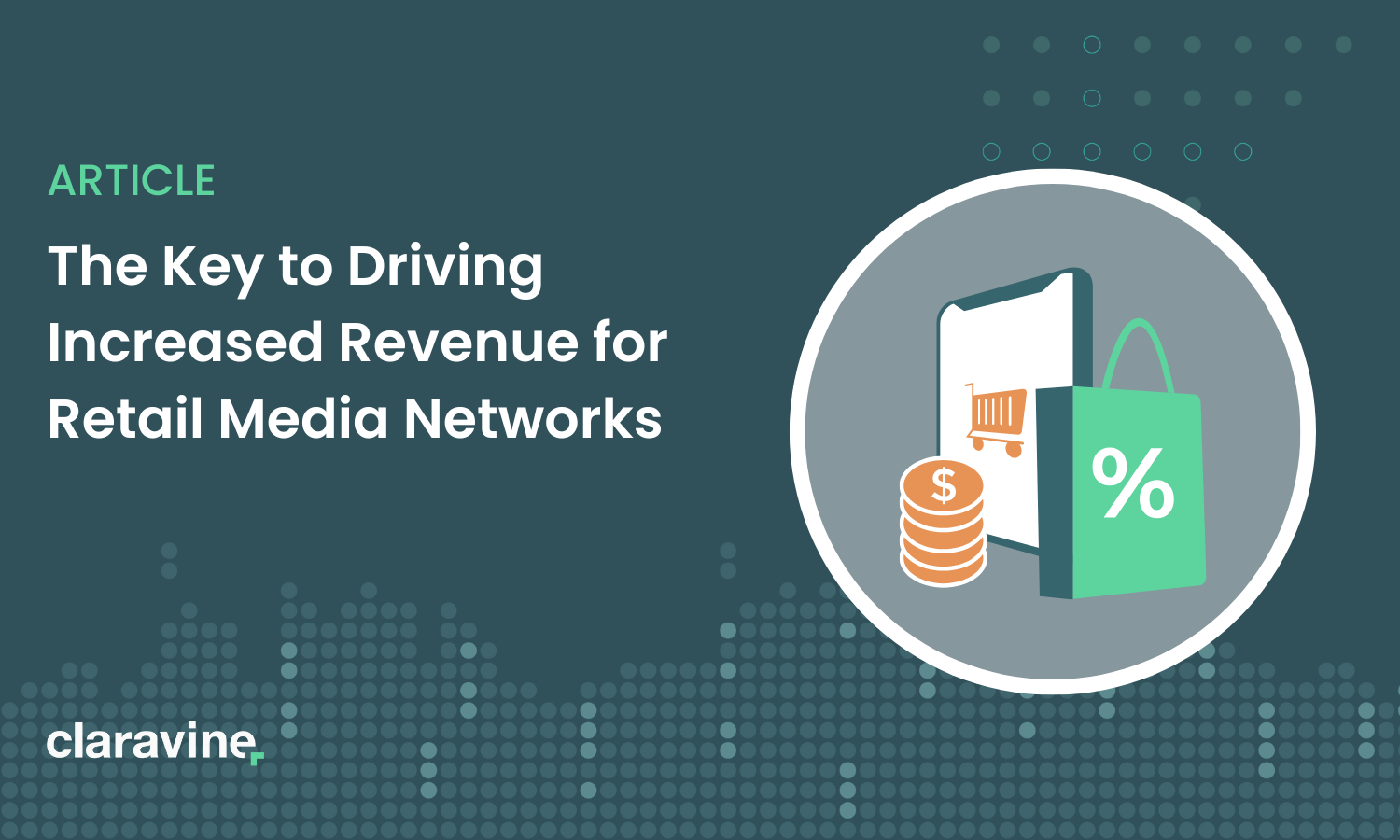Data Standards: The Key to Driving Increased Revenue for Retail Media Networks

Retail media networks (RMNs) are a rapidly growing segment of the digital advertising market. RMNs allow retailers to sell their own ad inventory, which can be a significant source of revenue. However, in order to be successful, RMNs need to have high-quality data.
Let’s break it down first; what does the term data standards mean for a retail media network?
In essence, for a retail media network, data standards are the blueprint for all your marketing data. They meticulously define how data is structured, formatted, and exchanged, ensuring uniformity and accuracy. This consistency is absolutely critical for making informed decisions about ad targeting and pricing, forming the bedrock of a high-performing RMN. It’s about establishing a common language for every piece of information flowing through your system, from campaign setup to performance measurement.
What’s the benefit of implementing RMN data standards?
Data standards are essential for ensuring the quality of data in an RMN. Data standards define how data is structured, formatted, and exchanged. They help to ensure that data is consistent and accurate, which is critical for making informed decisions about ad targeting and pricing.
There are a number of benefits to using data standards in an RMN. First, data standards can help to improve the accuracy of data. This is important for a number of reasons. For example, accurate data can help to ensure that ads are targeted to the right audience, which can lead to better results. Additionally, accurate data can help to avoid fraud and other problems.
Second, data standards can help to improve the efficiency of data management. This is because data standards can help to automate tasks such as data cleansing and validation. This can free up time and resources that can be used for other tasks, such as developing new products and services.
Third, data standards can help to improve the security of data. This is because data standards can help to define who has access to data and what they can do with it. This can help to protect data from unauthorized access, use, or disclosure.
Overall, data standards are essential for ensuring the quality, accuracy, efficiency, and security of data in an RMN. By implementing data standards, RMNs can improve their performance and better serve their customers.
AI Readiness: Fueling the Future and Implementing RMN Data Standards
In today’s rapidly evolving marketing landscape, AI is no longer a distant concept – it’s becoming central to advanced targeting, personalization, and automated campaign optimization. For RMNs, being AI-ready is paramount, and this readiness starts and ends with your data. AI models are only as good as the data fed to them. If your RMN’s data is fragmented, inconsistent, or lacks standardized metadata, your AI initiatives will struggle to deliver accurate insights, make precise predictions, or generate truly impactful campaigns. High-quality data, ensured by robust data standards, provides the clean, reliable fuel your AI needs to thrive, driving smarter decisions and unlocking the full potential of this transformative technology for your revenue streams. Implementing RMN Data Standards is the critical step to achieve this AI readiness and maximize your revenue.
Here are some specific examples of how data standards can benefit RMNs:
Improved targeting accuracy: When data is structured and formatted consistently, it is easier to use for targeting ads. This can lead to better results for advertisers and higher revenues for retailers. For example, if a retailer has data on the demographics of its customers, it can use that data to target ads to specific audiences. This can help to ensure that ads are seen by people who are most likely to be interested in them, which can lead to better results.
Increased efficiency: When data is standardized, it can be easily shared between different systems. This can help to speed up the ad serving process and improve the user experience. For example, if a retailer has data on its inventory, it can share that data with its ad network. This can help to ensure that ads are served quickly and accurately, which can improve the user experience.
Enhanced security: When data is properly protected, it is less likely to be stolen or misused. This can help to protect the privacy of customers and the reputation of retailers. For example, if a retailer has data on its customers’ credit card numbers, it can use data encryption to protect that data. This can help to prevent hackers from stealing that data, which can protect the privacy of customers and the reputation of the retailer.
Overall, data standards are an essential part of any successful RMN. By implementing RMN data standards, retailers can improve the quality, accuracy, efficiency, and security of their data. This can lead to better results for advertisers, higher revenues for retailers, and a better experience for customers.
While customer experience is absolutely paramount, RMN’s are also looking at ways to drive revenue streams. Here are some specific examples of how data standards have helped RMNs drive increased revenue:
- Walmart’s retail media network, Walmart Connect, has seen significant growth in recent years. In 2021, Walmart Connect generated $2.1 billion in advertising revenue. This represented strong growth; in Q4 2021, automated ad sales drove half of Connect’s revenue—doubling from the previous year. Media coverage highlighted how Walmart’s use of first-party customer data and automation tools led to improved targeting and pricing effectiveness.
- Target’s retail media network, Roundel, has also seen significant growth in recent years. Target’s ad business, Roundel, brought in about $1 billion in revenue in 2021. By 2024, Target described Roundel as creating “nearly $2 billion of value,” with projections to double in five years. Coverage emphasizes that Roundel’s strength stems from leveraging first-party buyer data for efficient ad delivery and strong advertiser ROI.
The numbers don’t lie – when retail media networks invest in proper data standards, they see real revenue growth that speaks for itself. But beyond the impressive billion-dollar figures, what really matters is creating an ecosystem where everyone wins: advertisers get better targeting and ROI, retailers unlock new revenue streams, and customers receive more relevant, less intrusive advertising experiences. As retail media networks continue to evolve and mature, the companies that prioritize clean, standardized data today will be the ones setting the pace tomorrow. After all, in a world where data is the new currency, shouldn’t we make sure we’re speaking the same language?
Are you ready to unlock the revenue potential hiding in your retail media network? Download our comprehensive guide to discover the data standards strategies that can help your RMN generate billions in advertising revenue and gain powerful insights in optimizing for AI using good metadata standards.




